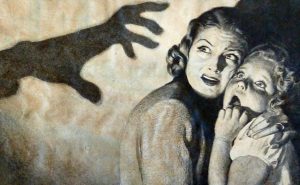Introduction
In the United States, human trafficking has been widely looked at through the lens of sex trafficking, and moreover, the sex trafficking of young white women and girls. This lens allows only a portion of human trafficking to be acknowledged and limits the responses our society deems best. For example, the response to human trafficking – and sex work as a whole – has widely been criminalization of such acts. This may be an appropriate response when the only people affected are affluent white women and girls; however, research shows communities of color and impoverished communities are at a much higher risk of being trafficked, for whom this criminalized response to human trafficking can be particularly harmful.
The Mann Act

The Mann Act resulted in the policing of women’s sexuality and limited the scope of what is seen as human trafficking.
The Mann Act of 1910, also known as the “White Slave Traffic Act,” was passed as a response to the narrative of white slavery. This narrative further perpetuated the idea that there was an evil procurer, typically seen as “foreign,” who would seduce, coerce, lure, trick, or force young white women into brothels far from their homes. This federal statute made it illegal to transport, or to cause the transportation of, women over state lines for the purpose of “prostitution, debauchery, or any other immoral purpose,” which was enforced by the Bureau of Investigations (now, the FBI).
Continue reading Compounding Problems: Human Trafficking and Minorities
 average day, while regular coffee drinkers reported drinking just under three cups of coffee on an average day. Looking back, these numbers have changed negligibly from 1999 to 2012. About a quarter of the people polled considered themselves to be addicted to coffee, but only about a tenth of those polled reported wanting to cut back on their coffee consumption.
average day, while regular coffee drinkers reported drinking just under three cups of coffee on an average day. Looking back, these numbers have changed negligibly from 1999 to 2012. About a quarter of the people polled considered themselves to be addicted to coffee, but only about a tenth of those polled reported wanting to cut back on their coffee consumption.